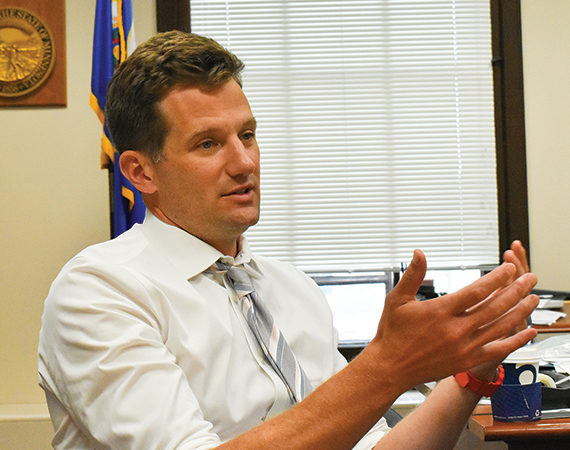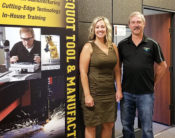For this issue, we spoke with DEED Commissioner Steve Grove about his experiences and outlook for the agency.
Are there particular advantages to coming in from the private sector, as you did?
“You do come in with fresh eyes because you don’t know exactly how the government works. There’s a learning curve, but at the same time, you can ask questions that get to the root of an issue. One thing we’ve recently done at DEED (Department of Employment and Economic Development) is refresh our mission and values. I used my personal business background as a guide for a new strategic plan and system called Objectives and Key Results. It’s more than just, “Hey, we want to do this or that activity.” Its focus is on outcomes and what numbers and strategies we need to achieve those outcomes. When government can benefit by operating a little more like a business, we lean into that, and where it wouldn’t be a benefit, we are honest about that, too. Good workplace culture isn’t just about being a fun place to work. It’s also about making us more effective in all the work that we do.” Said Steve.
How do you outline your vision and strategy for DEED?
We have several key objectives for the agency. First, we want to make Minnesota’s innovation economy a national leader. We want to end up on a series of Top Five lists. We want to increase the number of innovative businesses that we deliver our incentives to by 25 percent—and we’re not just talking about tech startups, but any business that’s using new technology to get demonstrably better. We also want to double the number of job seekers we hit with tech training. Second, we want to reduce the disparities faced by populations with traditional barriers to employment. We want to find a two-dollar-an-hour bump in wages for people of color and have every single program at DEED—there are around 70 or so—incorporate measurable objectives related to equity. Finally, we want to grow Minnesota’s workforce for our businesses now and in the future. We want to increase the percentage of people who use our career force services, both online and in person. We want people to think of our system as a really great and powerful place to find workers.
“Launch Minnesota” is a new DEED program that provides financial incentives, training, and grants to people starting companies in technology sectors. It has received a lot of good buzz in the business community.
The Launch Minnesota initiative is exciting. Economic development at the state level generally focuses on what you might call the usual recipients—manufacturing, forestry, mining. They are all important industries, but we haven’t spent as much time focusing on the startup ecosystem or entrepreneurs. Launch Minnesota has only five million dollars in new spending, but it’s a valuable opportunity to build a brand around Minnesota becoming a Top Five national leader for its innovation economy. I think the pilot we’re doing with Enterprise Minnesota is an excellent example of that. We can focus on smaller manufacturers and incentivize them to do automation in a way that works for them, and we can help fill the gaps in the training required to make that transition. We also just got funding to do a future-of-work study that asks honest questions to determine where our economy is headed: “Are we ready? Are businesses ready? Is our workforce system ready for what’s to come?” That’s really exciting to me.
Was there a particular aspect of this job that came as a surprise?
I am surprised the level of complexity in our workforce development system doesn’t always lead to optimal outcomes. You’d like to think that we have a diverse system where the whole is greater than the sum of its parts. But I believe we are in a situation now where the whole is less than the sum of its parts; stakeholders are at odds more often than they should be. There’s not a common goal. Nonprofits focus on the equity slice of workforce, and local workforce boards focus on the geography of the workforce challenge. And then there are federal grant dollars and state grant dollars. Everyone wants to grow our workforce, but often people are fighting over the same block of cheese, and it’s not going to get bigger. We’re trying to use this workforce crisis to call people to something greater than just fighting over resources.
…
Featured in the Fall 2019 issue of Enterprise Minnesota magazine.

